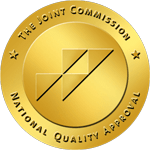What Is Methcathinone
Methcathinone is a stimulant drug similar to methamphetamine. It is an illegal recreational drug and is considered highly addictive.
It is usually snorted, but can be smoked, injected or taken orally. Some of the its more common street names include: MCat, Meow, Bathtub Speed, Kitty and Meth’s Cat.
Methcathinone is currently a Drug Enforcement Agency (DEA) Schedule I controlled substance in the United States. Chronic high dosage of methcathinone may result in acute mental confusion ranging from mild paranoia to psychosis.
These symptoms typically disappear quickly if use is stopped. Unlike methamphetamine, methcathinone is not legal under any circumstances in the US due to its classification as a Schedule I substance. Conversely, methamphetamine has certain medical uses such as treatment of morbid obesity, narcolepsy and ADHD.
Effects of Methcathinone
The effects of methcathinone are similar to methamphetamine, although sometimes considered less intense and more euphoric. The effects have been compared to those of cocaine, since it regularly causes hypertension (elevated blood pressure) and tachycardia (elevated heart rate).
Other effects include increased alertness, rapid breathing, inability to stop talking, increased empathy and communication, both decreased and increased sexual function and desire, and loss of cognitive ability.
Methcathinone can be highly psychologically addictive and can produce methamphetamine-like withdrawals. Methcathinone withdrawal symptoms of abrupt cessation of long-term use, or even high-volume short term use, is commonly followed by depression, anxiety, and craving for the drug.
Withdrawal is usually followed by fatigue and a “crash.” Upon awakening there is continued sleepiness, depression and anhedonia (an absence of feeling). Anergia (lack of energy) is typical as the patient will rarely arise for anything other than a need to go to the bathroom.
Mood generally returns after several days although in some cases anhedonia and anergia can last for several weeks. Cravings for the drug may continue for several weeks to several months. Users relapse when anhedonia and dysphoria are present, and reinitiate use in an effort to avoid the “crash.”
Relapse is also connected with exposure to stimuli which evoke memories of the euphoric effects of the drug. Treatment for methcathinone addiction includes supportive therapy and specialized treatment by medical professionals.


